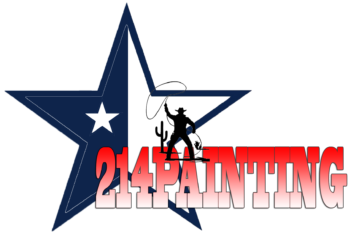Interior vs. Exterior Painting: Where Should Investors Prioritize?
Painting is one of the most effective ways to boost a property’s value, but should real estate investors DIY or hire a professional painter? While taking the DIY route can save money, professional painters offer expertise that ensures a high-quality finish. This guide explores the pros and cons of DIY vs. professional painting, when it makes sense to save with DIY, and common painting mistakes that can hurt a home’s value.
Pros and Cons of DIY Painting for Investment Properties
Pros of DIY Painting:
Cost Savings: Hiring a professional can be expensive, while DIY painting only requires the cost of paint and supplies.
Flexibility: Investors can paint on their own schedule instead of waiting for a contractor’s availability.
Control Over Quality: You can ensure that proper prep work and high-quality materials are used.
Cons of DIY Painting:
Time-Consuming: Painting a property takes significant time, especially for inexperienced painters.
Labor-Intensive: Preparing surfaces, taping edges, and applying multiple coats can be physically demanding.
Risk of Poor Results: Uneven coats, drips, or missed spots can reduce a home’s perceived value and appeal to buyers.
When to DIY and When to Hire a Pro
DIY Painting Makes Sense If:
You have experience and confidence in painting techniques.
The job is small, such as touching up walls or painting a single room.
You’re working with a limited budget and have the time to do it right.
Hiring a Professional is Worth It When:
The property requires exterior painting, which involves ladders, safety risks, and weather considerations.
There are multiple rooms or large surfaces that need an even, professional finish.
The home is being prepared for resale or rental, and first impressions matter.
Time is a constraint, and the project needs to be completed quickly.
Common DIY Painting Mistakes That Can Hurt Property Value
Skipping Proper Prep Work: Failing to clean walls, patch holes, or apply primer can lead to a poor finish.
Choosing the Wrong Paint Type: Using the wrong finish (e.g., flat paint in high-traffic areas) can result in faster wear and tear.
Using Low-Quality Paint or Tools: Cheap paint may require more coats and fade quickly, reducing durability.
Messy Edges and Drips: Uneven lines and drips on trim or ceilings make the property look unprofessional.
Ignoring Curb Appeal: DIY exterior painting without proper technique can lead to streaks, peeling, and lower curb appeal.
Final Thoughts: The Best Painting Strategy for Investors
For real estate investors, the decision between DIY vs. professional painting comes down to budget, experience, and project size. While small touch-ups or single rooms can be handled independently, larger or exterior projects often benefit from professional expertise. Investing in a high-quality paint job ensures better resale value, tenant appeal, and long-term durability.
Final Thoughts: The Best Painting Strategy for Investors
For real estate investors, the decision between DIY vs. professional painting comes down to budget, experience, and project size. While small touch-ups or single rooms can be handled independently, larger or exterior projects often benefit from professional expertise. Investing in a high-quality paint job ensures better resale value, tenant appeal, and long-term durability.
Contact Us
If you’re an investor looking for expert painting services to enhance your property’s value, we’re here to help! Contact us today for a free consultation and get a professional finish that attracts buyers and tenants.
The Ultimate Guide to Bathroom Painting for Real Estate Investors & Realtors in DFW
Transforming a bathroom with fresh paint is one of the...
Read MoreHow Drywall Repairs Can Prevent Bigger Issues in Investment Properties
Neglecting drywall repairs in investment properties can lead to significant...
Read MoreTop-Rated Cabinet Painters in Dallas: What to Look for in a Pro
Looking to update your kitchen without spending a fortune? Affordable...
Read MoreAffordable Cabinet Painting: How to Refresh Your Kitchen on a Budget
Looking to update your kitchen without spending a fortune? Affordable...
Read More




